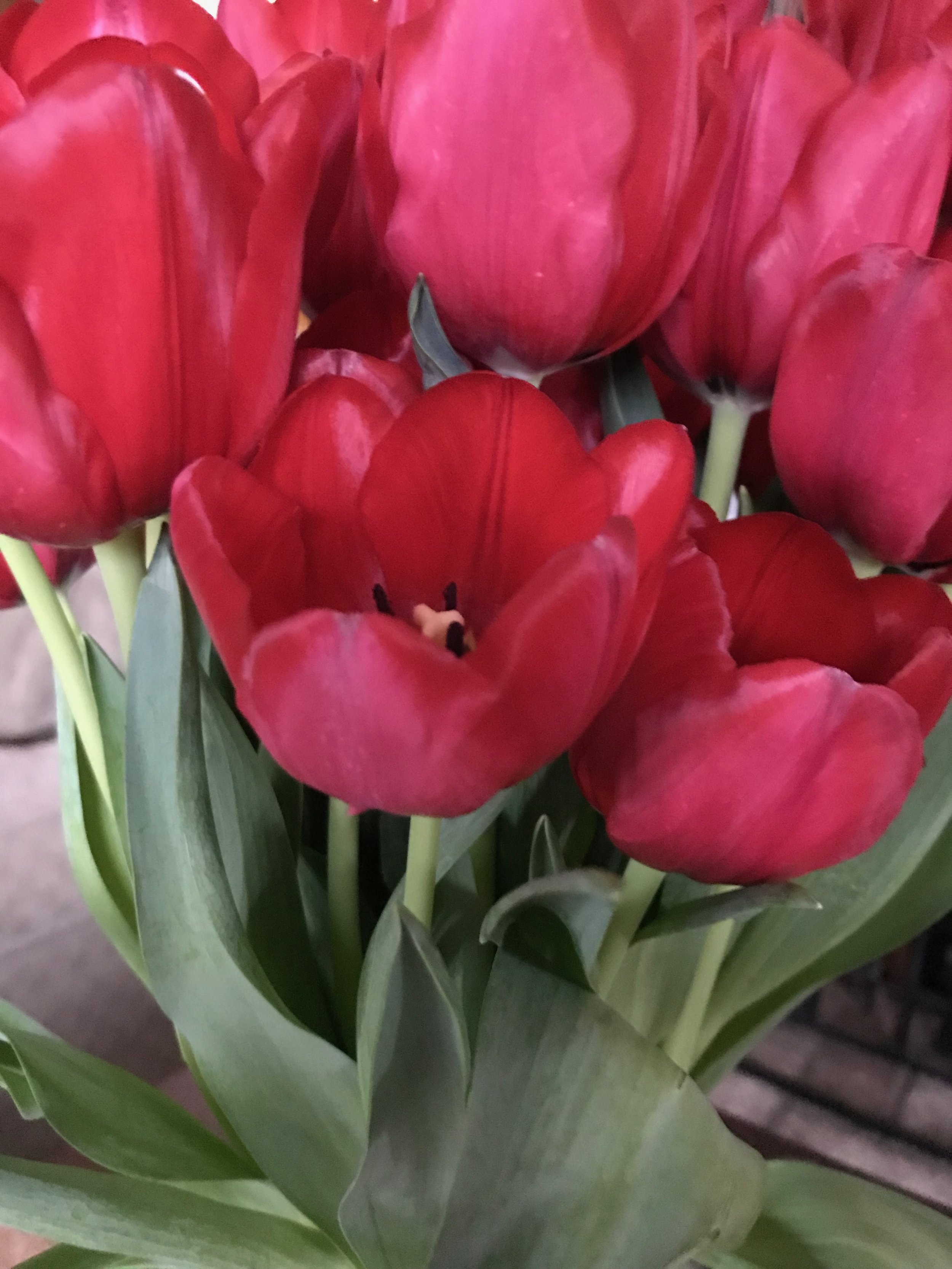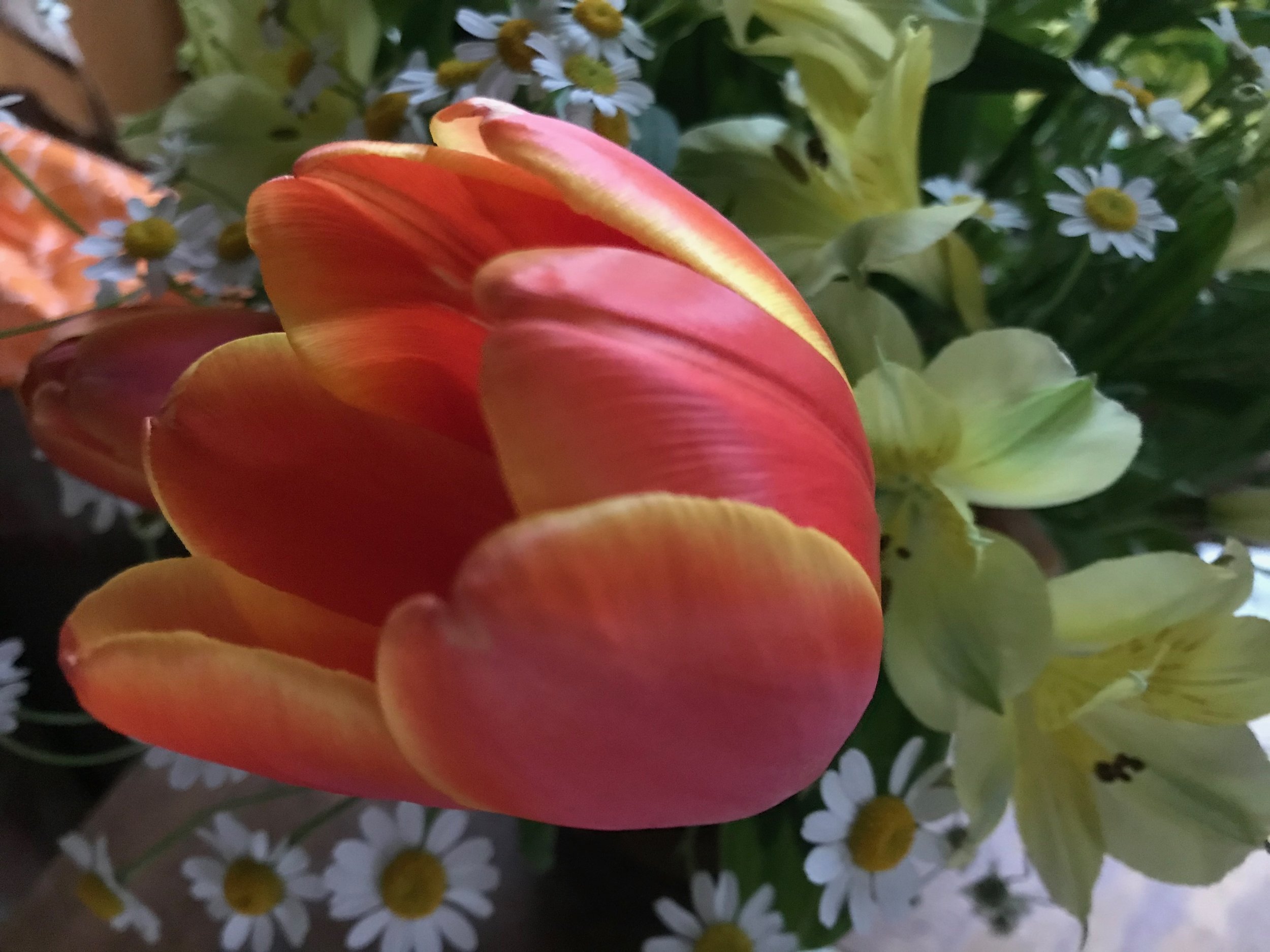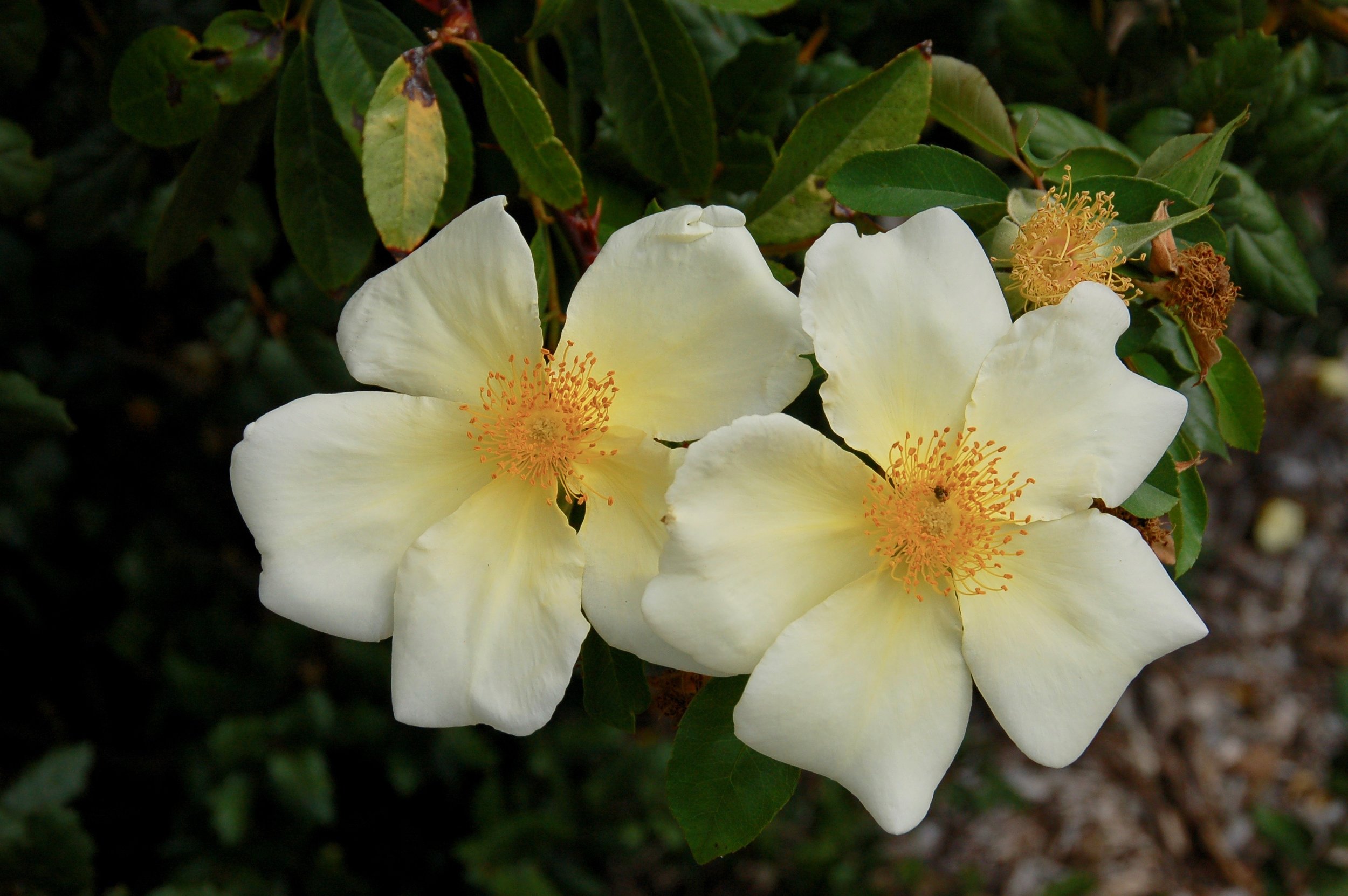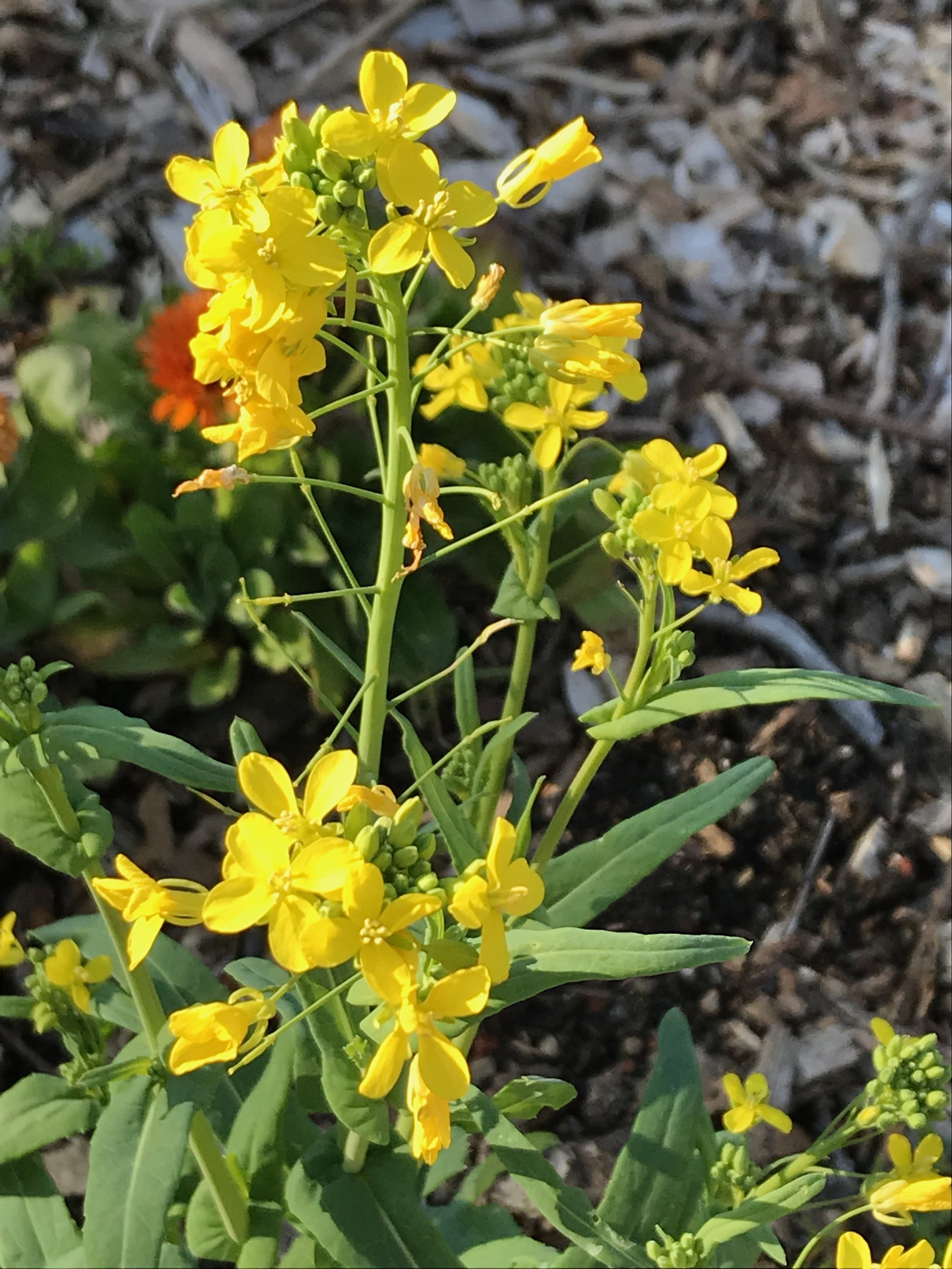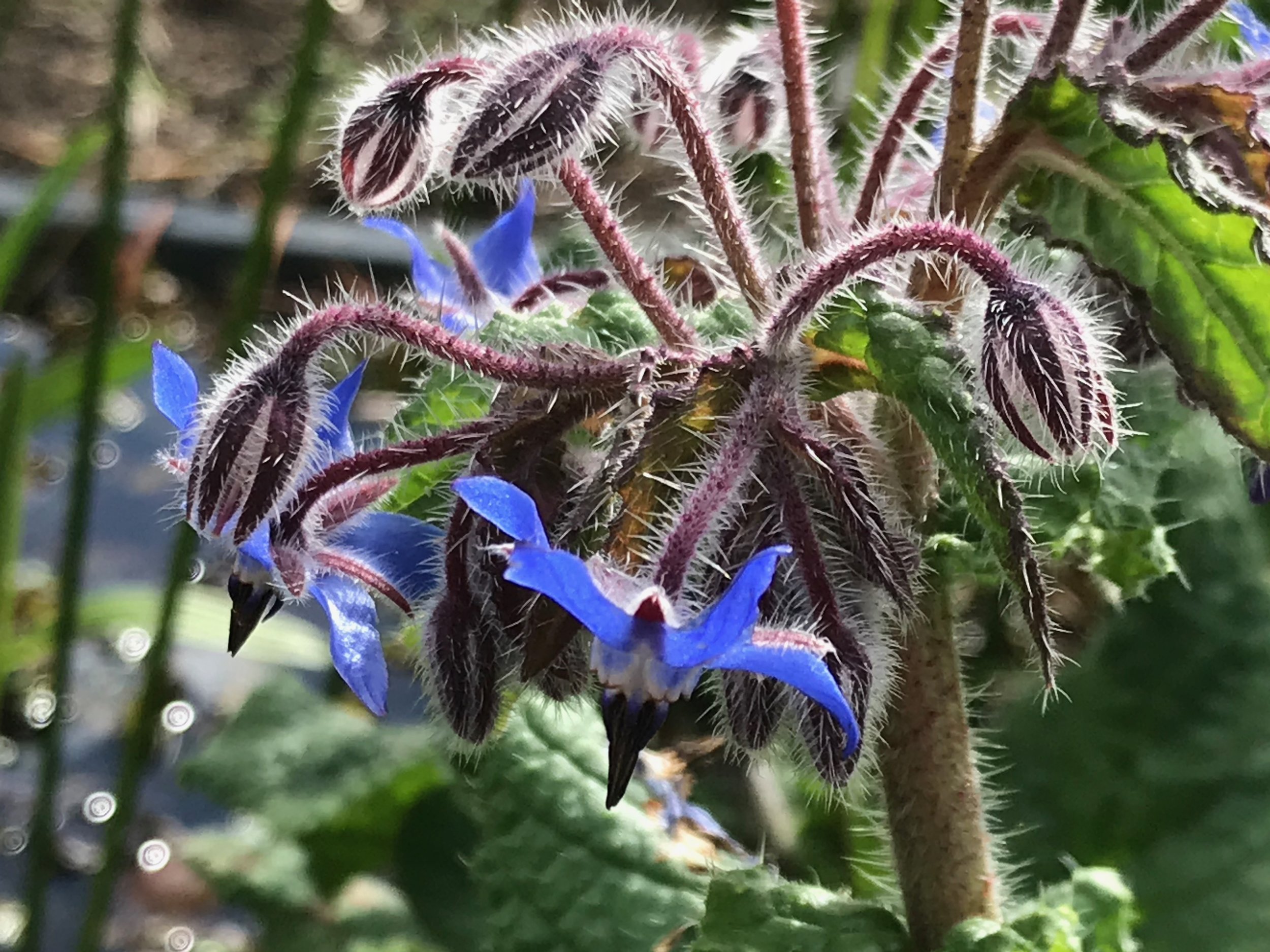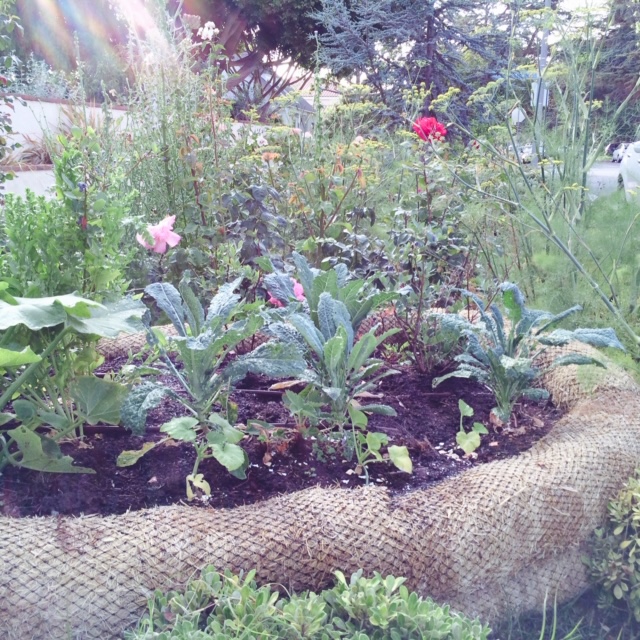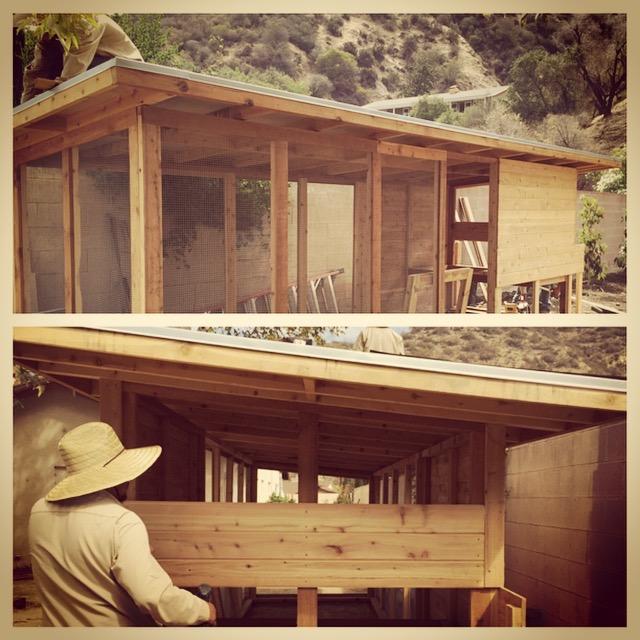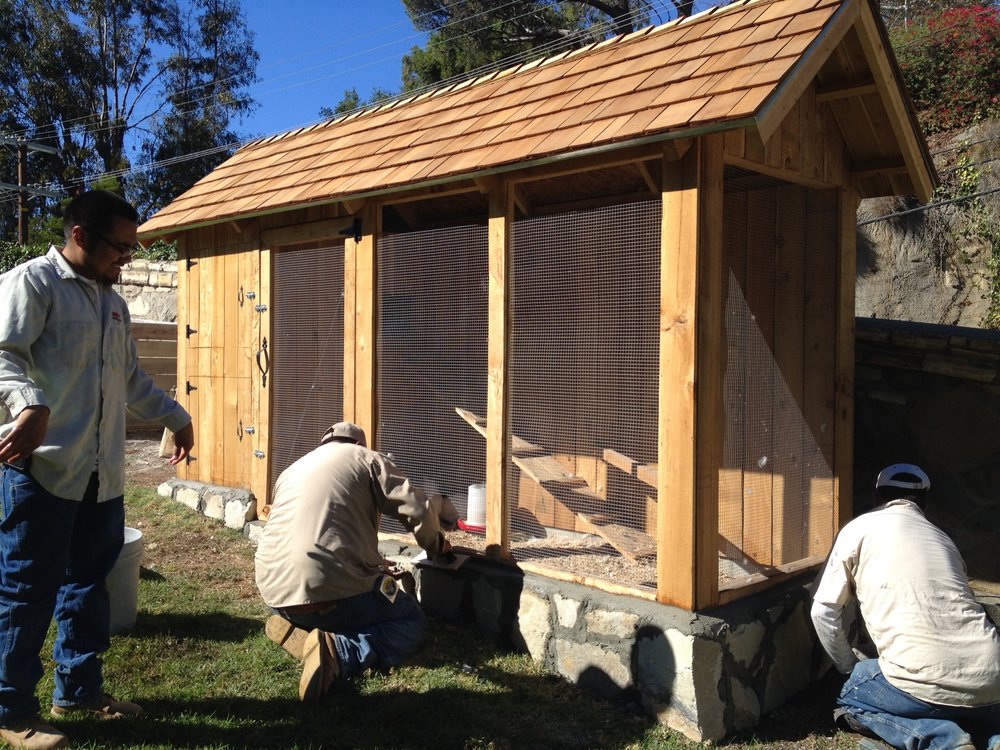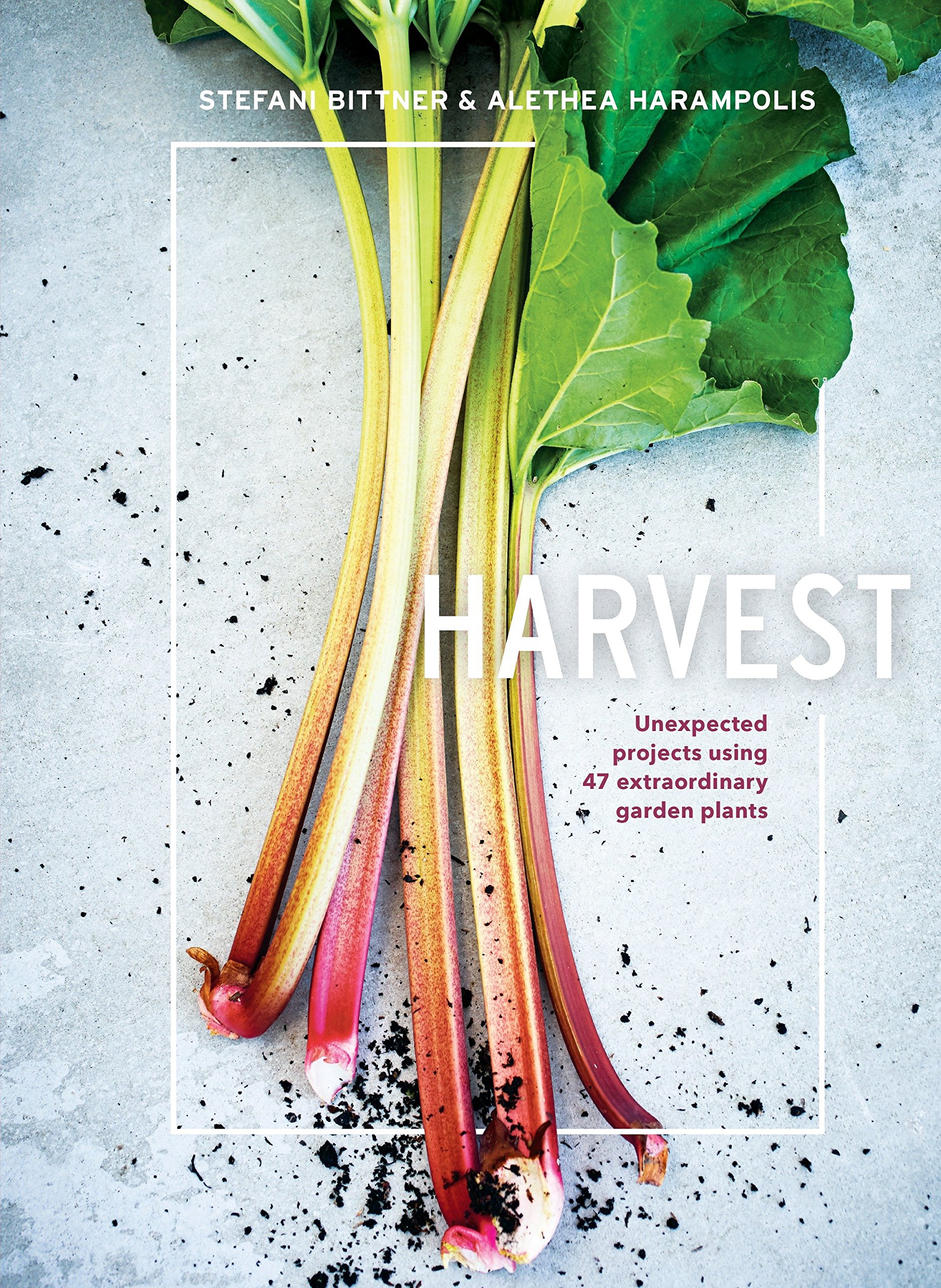Photo courtesy of Jude Parkinson-Morgan, Jude Parkinson-Morgan Photography.
DESIGNER PLANT PICKS:
GROWING HOPS: TIME FOR BEER
Fresh from the vine is not a phrase usually associated with home-brewed beer. But grow your own hops, and you can claim just that.
In the garden, hops are fast-growing, perennial vines that can soar 20 feet tall in a flash. They're also exceedingly deciduous, dying to the ground and vanishing each winter. But in late summer or early fall, their female, cone-shaped flowers grow plump with lupulin—yellow, pollen-like granules—that preserve and add aroma and flavor to beer. The lime-green cones look similar to ornamental oregano and are quite pretty, even if you never harvest them.
by Joan Bolton
Santa Barbara Garden Design
Goleta, CA
Photo courtesy of Joan Bolton, sourced from iStock.com/tfoxfoto.
Pretty Enough to Eat: Edible Flowers
by Patricia St. John, FAPLD
St. John Landscapes, Berkeley, CA
How festive and fun to use edible flowers in dishes. There are many more edible flowers and ways to use them than we imagine.
Of course the ones that are frequently mentioned are nasturtiums, which I use for canapés with toasted thick crusted bread, seasoned cream cheese and top with nasturtiums, borage flowers, violas and snips of herbs. I use calendula flower petals and blue and gold violas to top an otherwise pedestrian tossed salad and sprinkled on cooked rice pilaf.
And as soon as summer comes around, I use rose petals in syrups and sorbets. Probably the most recognizable ‘herb’ for use in my culinary adventures is lavender. It finds its way in lavender cookies, lavender shortbreads, and lavender frosting on chocolate mini-cupcakes.
Actually all the herbs flowers are edible—what a bonus!
Photos courtesy of Patricia St. John.
TOOLS AND TIPS:
The Artful Edible Garden
by Suzanne Arca, FAPLD
Arca Design Group Albany, CA
Many of us caught the edible garden craze a few years back, but some of us may have found that a farm-to-table garden isn’t always the most aesthetically appealing scene. This doesn’t have to be the case. Using edibles in landscape design can increase the health and economic benefits we derive from our gardens, and can be done in such a way as to increase a garden’s visual appeal. Thoughtfully incorporating decorative containers, plant forms, and hardscape structures, as well as blending edibles with ornamentals are ways to enhance the ornamental garden. You are still able to reap the many benefits of growing your own food.
Although the traditional kitchen garden, potager, or parterre has its own kind of traditional beauty, that beauty may or may not jive with the aesthetic of your home or existing garden. Is your home and landscape modern with clean lines and minimal plant materials? Consider swapping out the traditional wood planter boxes for corten or stainless steel in a variety of shapes and shades. Food-safe options are available for these. Arranging your plantings in carefully chosen blocks of contrasting color and texture can also achieve a beautifully clean, minimalist look. Do you have a Mediterranean villa theme? Consider planting your favorite herbs, vegetables, or fruits in beautiful, deep ceramic pots arranged in groups throughout the garden.
Photo courtesy of Suzanne Arca.
Thumbnail Designs: Artful Details
By Arleen Ferrara
Satori Garden Design
Santa Monica, CA
WATTLES FOR VEGGIES
First, I must give my mentor and friend Marilee Kuhlman full credit for this one. I was meeting with her and brainstorming for a client and she mentioned how she tested out places on her property for future edible beds by using straw wattles. Wattles, what?! My ears perked up because I had just about thrown in the towel trying to grow edibles in my parkway. I had serious compaction and heavy clay, but I didn’t want to build a rectilinear structure in my parkway in order to hold good soil. The wattle was the answer because I was able to tuck in two kidney shaped raised beds surrounding my roses and it actually looks pretty darn good. The wattles have become a neighborhood “icebreaker” as people walk by. Best of all, straw wattles are inexpensive, about $24 for 25 feet of wattle. I stacked one atop the other and drove down rebar in a few places to secure it. The wattle will slowly drop in height as it decomposes. When it needs replacing, simply cut the netting and compost the straw. Voila!
Deborah Kuchar
Green Alchemy
Oakland, CA
EDIBLES IN A NARROW, SHADY SIDE YARD
Deborah found a clever solution for getting more light into a narrow side yard in this Oakland garden. She designed narrow raised beds to grow veggies and make use of reflected light off the stucco along the house. She also designed a new fence with a lower height and alternated the fence boards with an opaque plastic that allows light through.
Photos courtesy of Deborah Kuchar.
Before.
Sacha McCrae
Living Gardens Landscape Design
San Clemente, CA
FOODMAP CONTAINERS
Photo courtesy of Sacha McCrae.
Sacha’s client turned her onto these unusual planters—reminiscent of baby cribs—and she planted them with edibles.
These containers are designed to help people grow food at home without taking up too much space. The contoured form keeps plants from being damaged by sitting water, but also has a central reservoir to keep the soil moist longer. The Foodmap Container is on wheels so it can be easily moved to the best growing space as weather and sunlight conditions change They are fabricated in Los Angeles County using 100% FDA Approved food grade Recycled HDPE plastic and is 100% recyclable.
by Christine Duffy
Perennial Design
Huntington Beach, CA
ACCESSIBLE EDIBLES
Photos courtesy of Christine Duffy.
by Mary Fisher, FAPLD
Mary Fisher Garden Design
Alameda, CA
HERB-ACEOUS ROOF
The client wanted two things: an herb garden near the outdoor kitchen and a place to hide the trash bins from view. Solution: A trash bin shed with a green roof that slopes toward the food prep area. We refresh the herbs every couple of years to keep it productive and attractive.
Photos courtesy of Mary Fisher.
G Russell Wightman
Russell Wightman Design
Monrovia, CA
BOX FARM
Created for L.A. Farm Hands (LAFH), Box Farms simplify the process of starting your own raised bed vegetable garden. Marine grade stainless steel hardware and powder coated steel come together in a durable and stylish solution to the raised bed vegetable garden. Contact Russell with inquiries regarding the cost and set-up of a box farm.
by Fleur Nooyen
Fleur Nooyen and Associates, LLC
Los Angeles
KAYU BATU CUBES
I designed these smaller vegetable boxes with wheels so the client can change the location according to the seasonal sun and shade patterns on her patio.
The wood species used is Kayu batu, also known as Red Balau. The planters were constructed by Marco de la Peza, a woodworker who has contributed his expertise to several of our previous projects.
Hugelkultur and its possibilities
by Leigh Adams and Shawn Maestretti
Leigh Adams
Interpretive Horticulturist
Los Angeles County Arboretum
As landscape professionals in the age of climate change, we have access to ways we can impact the vitality of our surroundings. Prioritizing water, biodiversity and carbon will make it so a significant planetary shift can occur. Here is a centuries-old practice to consider if it’s feasible in your project(s):
Hugelkultur (noun - German - translates to "mound culture") is a horticultural technique where mounds constructed of woody material and other compostable biomass are used as raised planting beds. Practiced in Germany and Eastern European societies for hundreds of years, this technique is being revitalized as an important sustainable solution in modern regenerative gardens. It is essentially a replication of natural processes in a forested area.
Regenerative Benefits of Hugelkultur:
Sequesters carbon on site by burying debris and woody material in the ground
Retains moisture on site through rainwater capture and thermal mass
Improves soil health due to an increase of nutrients from the decaying wood and the subsequent increase of mycorrhizal fungi and other organisms in the soil food web
Landforming not only helps to slow and allow water to infiltrate, but creates an opportunity for natural screening and orchestrating experiences in the garden.
And so much more….
ESPALIERS: Age Old Art with Modern Application
by Ed Laivo
‘Ed’Able Solutions
Photo courtesy of Mary Fisher.
There are many challenges to the future of home growing fruit trees. The reasons have nothing to do with the desire or demand; both are high. Today most all of the novelty varieties of fruit are grown by the home gardener. With lots sizes getting smaller, the cost of water going up and the introduction of a new pest or disease almost yearly, it is no wonder that the desire to grow your own fruit in the future could be in jeopardy.
Espaliering fruit trees traces back to ancient Rome. Developing slowing through the centuries it gradually becomes the art form that we know today. But during the Roman times, espalier was not applied as an art form but rather a vertical pruning application that allowed for more fruit trees to be grown in less space inside walled gardens
Today we are faced with a number of challenges to the future home growing of fruit trees. Space, of course, is a primary concern along with the cost of water, but pests and disease controls may be the biggest concern of all. Espaliered fruit trees in the home garden may offer the best advantage going forward to address all of these concerns.
Custom Chicken Coops
G Russell Wightman
Russell Wightman Design
Monrovia, CA
Designed with both human and chicken in mind, custom chicken coops are a great way to make a statement or complement a landscape. Custom coops are built with the needs of humans as well as the need of the feathered members of their family. Consider a custom coop “Haute cluckture.”
Russell works with local craftsmen and contractors to price, build, and install custom coops.
Click images to expand.
BOOK REVIEWS:
reviews of Edible BookS
by Patricia St. John, FAPLD
St. John Landscapes, Berkeley, CA
My favorite edible landscaping book of all time is Rosalind Creasy’s seminal book, Edible Landscaping, published in 2010 by Counterpoint Press, Berkeley, CA. From the soil to the design basics for large and small spaces she covers everything about designing an edible garden. Creasy also covers all the herbs, vegetables, fruits, nuts, and berries that we would ever think to grow. Every time I’m suggesting plants for the gardens I’m designing I refer to her encyclopedia. Her book is also our text for the Edible Landscaping class at Merritt College in Oakland.
Stefani Bittner and Alethea Harampolis’ book Harvest is more current; this 2017 Ten Speed Press (Berkeley, CA) book focuses on edible garden plants. They take a contemporary look at ‘unexpected projects using 47 extraordinary garden plants’. Addressing homeowners (and designers) in their introduction, they express the aim of the book, “... A garden can benefit and enrich your life in so many ways. This means growing edible plants that provide flowers, fruits, and herbs for use in the kitchen as well as throughout your home in beautiful arrangements. And just because a garden is beautiful doesn’t mean it cannot also be useful.” This philosophy has opened up a new way of looking at ‘edible landscapes’ as an integral part of the whole (edible and non-edible) garden, with bounty harvestable year round.
Another great book is Edible Landscaping with a Permaculture Twist by Michael Judd and distributed by Chelsea Green Publishing. The subtitle of this 2013 book says it all: “How to Have Your Yard and Eat it Too”. I love the premise and practice of permaculture, but I often design small residential gardens for families who expect a more formal, ordered garden opposed to a total adherence to permaculture practices. This book strikes a happy balance. Edible Landscaping with a Permaculture Twist is an instructive resource for, as Judd explains in his introduction, “... designs (that) can be easily grafted to the micro-habits of the urban landscape, scaled up to the acreage or homesteads, or adapted to already flourishing landscapes.” Designs include herb spirals; rainwater harvesting, swales and rain gardens; Fungi!! growing specialty mushrooms; food forests; uncommon fruits; Hugelkultur, mounds of fertility, and earth ovens. I’ve incorporated many of these in my landscapes, and it’s nice to know there is a clear, concise source for all these designs—as Judd invites, “It’s a book to be carried out into the landscape...”



